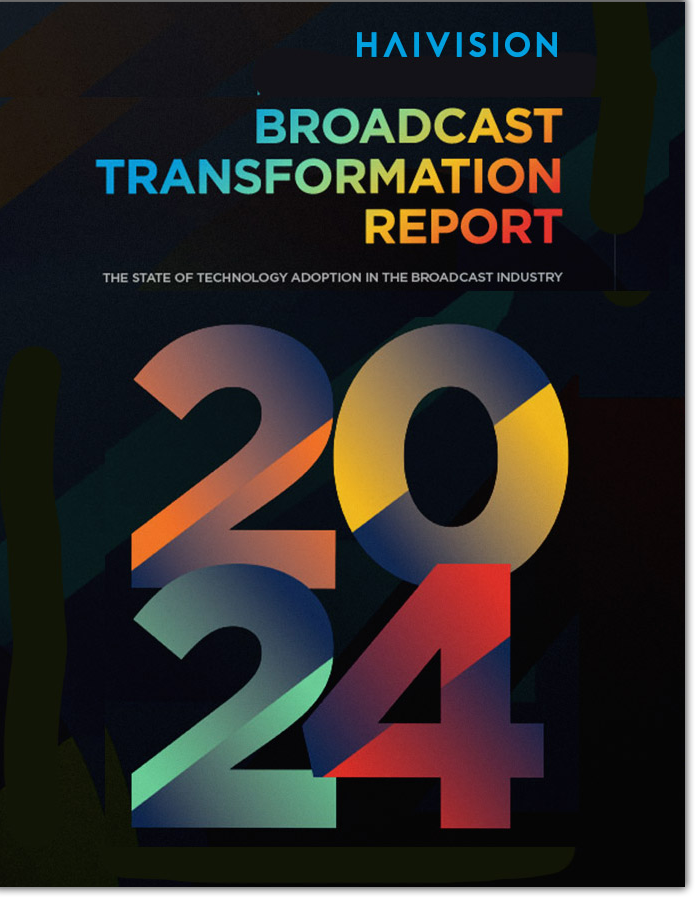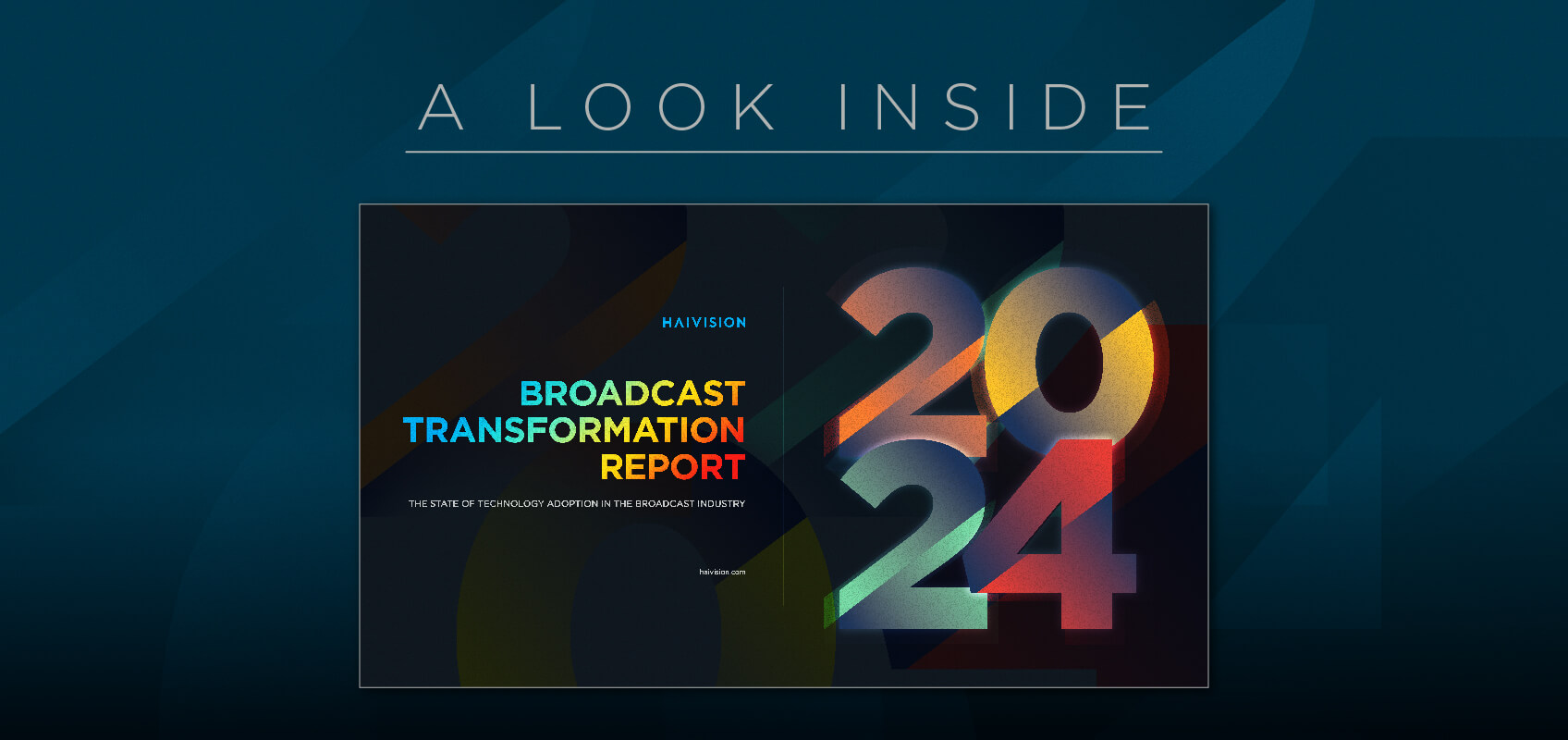Each year, Haivision publishes findings from its annual state-of-the-industry survey, capturing trends in the broadcast industry as reported by industry professionals themselves. This highly anticipated collection of insights highlights the state of technology adoption in the broadcast industry.
This year, we not only saw the most responses to our survey to date – over 800 media and broadcast professionals provided their insights – but we also celebrate a momentous achievement: the fifth edition of the report!
Inside the report, you’ll find insights that reflect the current broadcast industry landscape from the diverse perspectives of engineers, live content producers, operations managers, and many other roles.
This blog shares the five key takeaways from this year’s report, addressing live video contribution, cellular network usage, 5G, cloud-based workflows, and AI. But, if you want to skip the highlights and dive right into all the findings, you can download the 2024 Broadcast Transformation Report here.
SRT is the Most Widely Adopted Transport Protocol
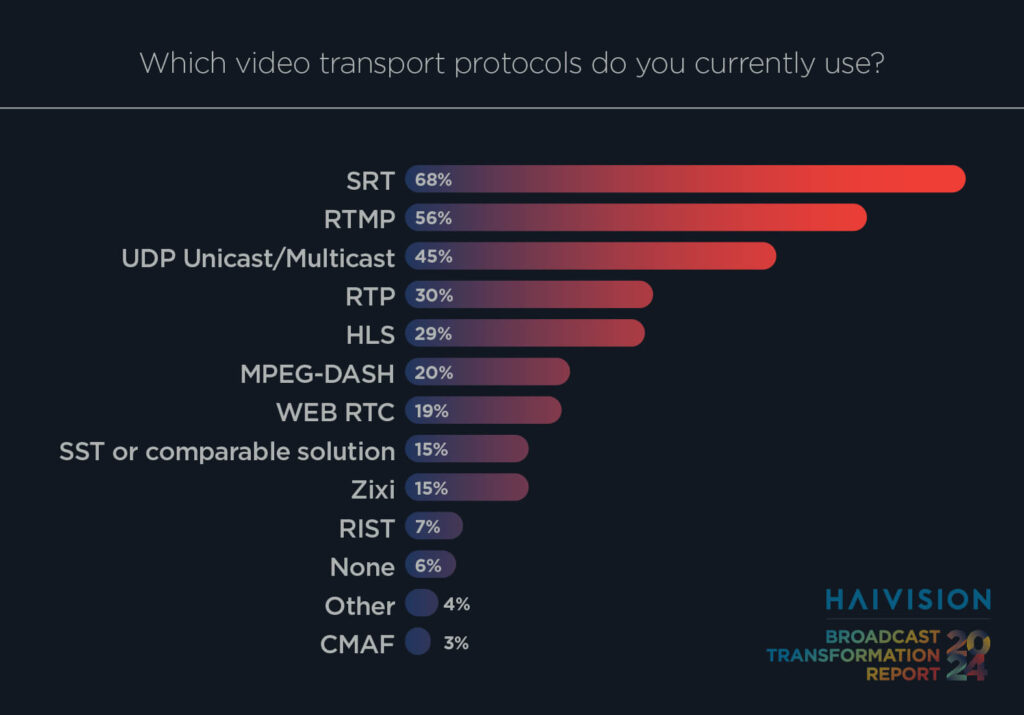
68% of respondents use SRT for live video transport, with 67% of those surveyed using the HEVC codec in their broadcast contribution workflows.
This year, survey results indicate that SRT continues to hold its position as the most widely adopted transport protocol, maintaining reliability and security in live video contribution over the internet. With streaming codecs, H.264 was the most common response, employed by 79% of respondents, with HEVC following at 67% for live video contribution.
Cellular Transport is Now Mainstream
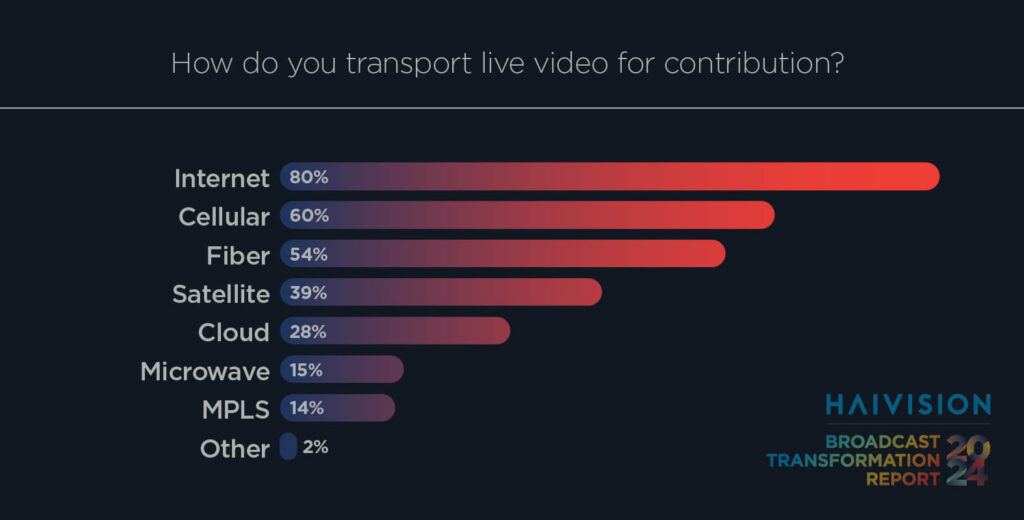
60% of broadcasters currently use 3G, 4G, LTE, or 5G for live video contribution, making cellular the most popular network for transport after the internet (80%).
While the internet was selected as the most popular option for video transport, it was followed by cellular networks – a new addition to this year’s report. A breakdown of the types of cellular networks our respondents are using shows that 44% are leveraging all types (5G, 3G, 4G, and LTE), which has increased since last year’s report (33%).
5G Takes Hold in Broadcast Production
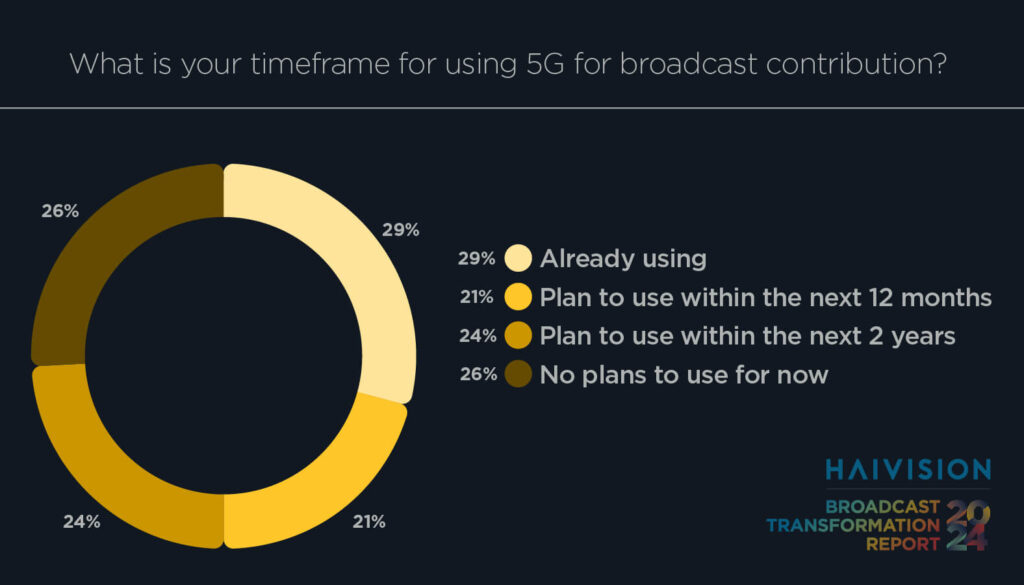
74% of broadcasters already use or plan to use 5G for broadcast contribution while 46% anticipate using 5G with private networks.
5G technology maintains its position as a transformative force, with 29% of broadcasters already utilizing it for live video contribution — a substantial 9% increase from the previous year. The benefits of greater bandwidth and lower latency drive its adoption, with 43% using 5G public networks and 22% using 5G private networks for live video contribution.
Cloud is Everywhere but On-Prem Still Rules
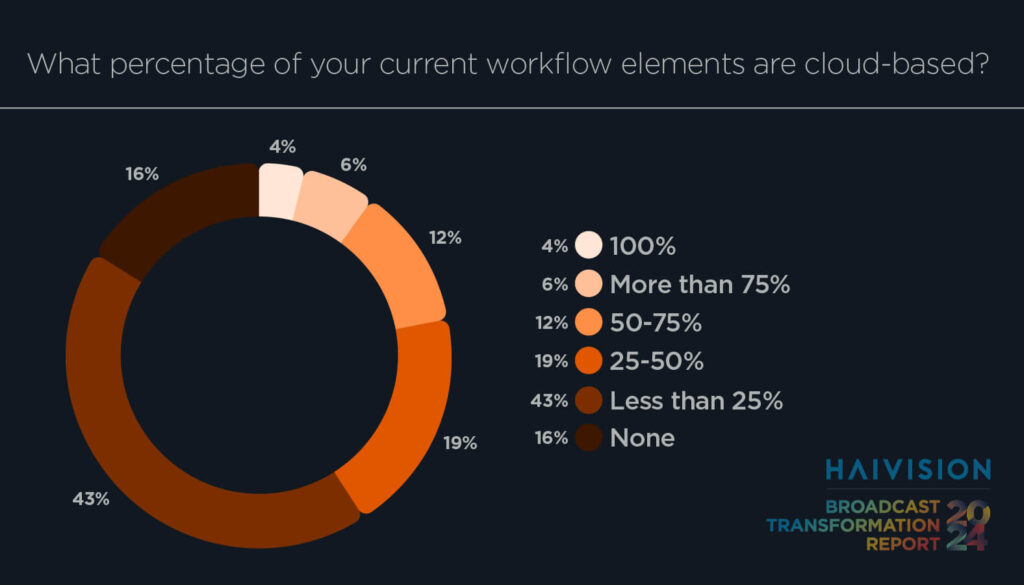
84% of broadcasters use at least some cloud-based technology, but only 22% use it for more than half of their current workflow elements.
The survey reveals a maturing perspective on the balance between cloud and on-premise workflows. While cloud-based workflows remain significant, being utilized by 84% of broadcasters in various capacities, it’s noteworthy that 59% of them leverage the cloud for less than 25% of their workflows. This underscores the central role on-premise solutions have within broadcast workflows.
Artificial Intelligence Makes an Impact
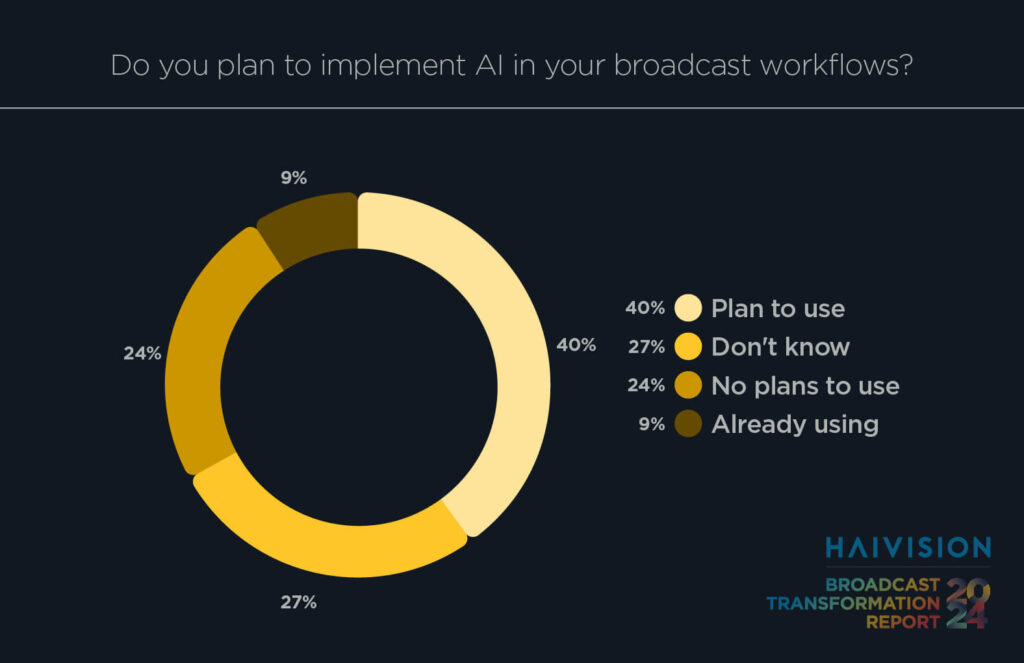
60% predict AI is the technology that will have the biggest impact on the broadcast industry in the next 5 years, with 49% planning to or already using AI in their workflows.
Artificial Intelligence (AI) and machine learning have now surpassed 5G as the technologies anticipated to have the most significant impact on broadcast production in the next five years, growing by 17% compared to the previous year. This shift reveals the industry’s keen interest in leveraging AI for a number of benefits in live production workflows including the top two responses in the report: efficiency and productivity gains through automation, and automated translation and closed captioning.
Methodology and Demographics
As in previous years, the survey accepted responses from October to December 2023, drawing in a substantial 814 participants globally. These contributors shared their views on the industry’s current landscape, the challenges they face, and how they foresee innovative technologies will influence live broadcast production.
Within this pool of respondents, 31% work within television broadcasting organizations, with an additional 25% affiliated with broadcast/OB services. Notably, the roles occupied by our survey participants largely fell within the realms of engineering (38%) and live production (20%).
Like previous years, our survey reaffirms the sustained momentum of network technologies, including cloud, IP, and 5G. In assessing the current state of the broadcast industry through our 2024 survey, a compelling narrative emerges, underscoring the dynamic nature of technological trends and the industry’s evolving landscape.
To explore more insights into the trends shaping today’s broadcast industry, download the full report here. You can also download a copy of an infographic featuring these five key takeaways here.
